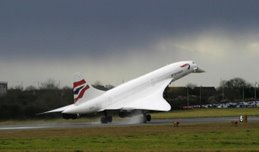RETURNING HOME - SEPTEMBER 2004
Santiago, Chile is a very nice town, as I've already mentioned on the first
post of the 2004 holidays. However, when coming back home, my mood is always somewhat more depressing than while going out...

"EARLY MORNING CHECK-IN - The Intercontinental Hotel is a quite nice hotel (no publicity needed) at Las Condes"

"LA MONEDA, a neo-classical building from Joaquin Toesca and Agustin Cavallero, which is the Seat of Chilean Government since 1922, and the Presidential Palace. Here we have a view from Constitution Square"

"SALVADOR ALLENDE GOSSENS (1908-1973) was the first socialist president of Chile. Born in an upper middle class family, he became involved in politics at the University. After completing his medical studies, he was elected to the Congress, served as minister of health, and became leader of the Socialist Party in 1942. In 1970, Allende won the presidency, and started what he named the «Chilean Road» to socialism. However, Allende had many internal and foreign opponents, and on September 11, 1973, he was overthrown in a violent military coup led by Pinochet. At the end of the day, Allende was found dead, and many assert that he was assassinated by the invading soldiers of the La Moneda Palace. Once democracy was re-established, he got his statue in front of La Moneda"




"ART EXHIBITION at La Moneda. Today, one can access the Palace from the Constitution Square, and see its interior gardens, as well as some permanent or temporary exhibitions of contemporary sculpture"

"AHUMADA STREET is an attractive pedestrian walkway in the heart of downtown Santiago that leads into the Plaza de Armas. Some nice buildings, shopping passages, and coffee shops help to create an interesting environment"

"MUSICIANS - The atmosphere of Ahumada Street changes radically on weekends, when office workers give way to street performers"

"PUENTE STREET - Another quite interesting pedestrian street, on the other side of Plaza the Armas"

"THE (FORMER) NATIONAL CONGRESS HOUSE was completed in 1876. Congress met in this building until Allende was overthrown by the September 11, 2003, military coup, when it was moved to Valparaíso. The building was declared a national monument in 1976 and housed the ministry of foreign affairs between 1990 and 2006. On January 26, 2006 the Chamber of Deputies recovered its old offices"

"PLAZA D'ARMAS WEEK-END MARKET - Anything to sell or buy"


"CATHEDRAL - The building - the fifth on the site, since the previous four were destroyed either by the Mapuche (the first) or by earthquakes and fires - was built between 1748 and 1775. Joaquin Toesca intervened in its restoration giving architectural unity to the Cathedral, blending both classical and baroque characteristics"

"MONUMENT TO THE INDIGENOUS PEOPLE - The Plaza de Armas was designed by Pedro de Valdivia, and it is considered the heart of the city with the Cathedral, the Royal Court, the Central Post Office and this unique sculpture celebrating Chile's Indian cultures and peoples"



"YOUNG ARTISTS - Starting the festivities of the National Day. Actually, Chile got its Independence on September 18, 1810, and every year Chileans celebrate their national day from September 17 until September 19"

"CHILEAN PRIDE - On September 17th, 2004, the National Day was approaching"























































































